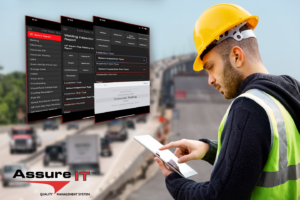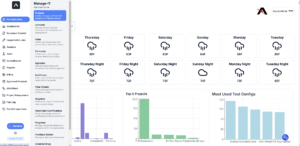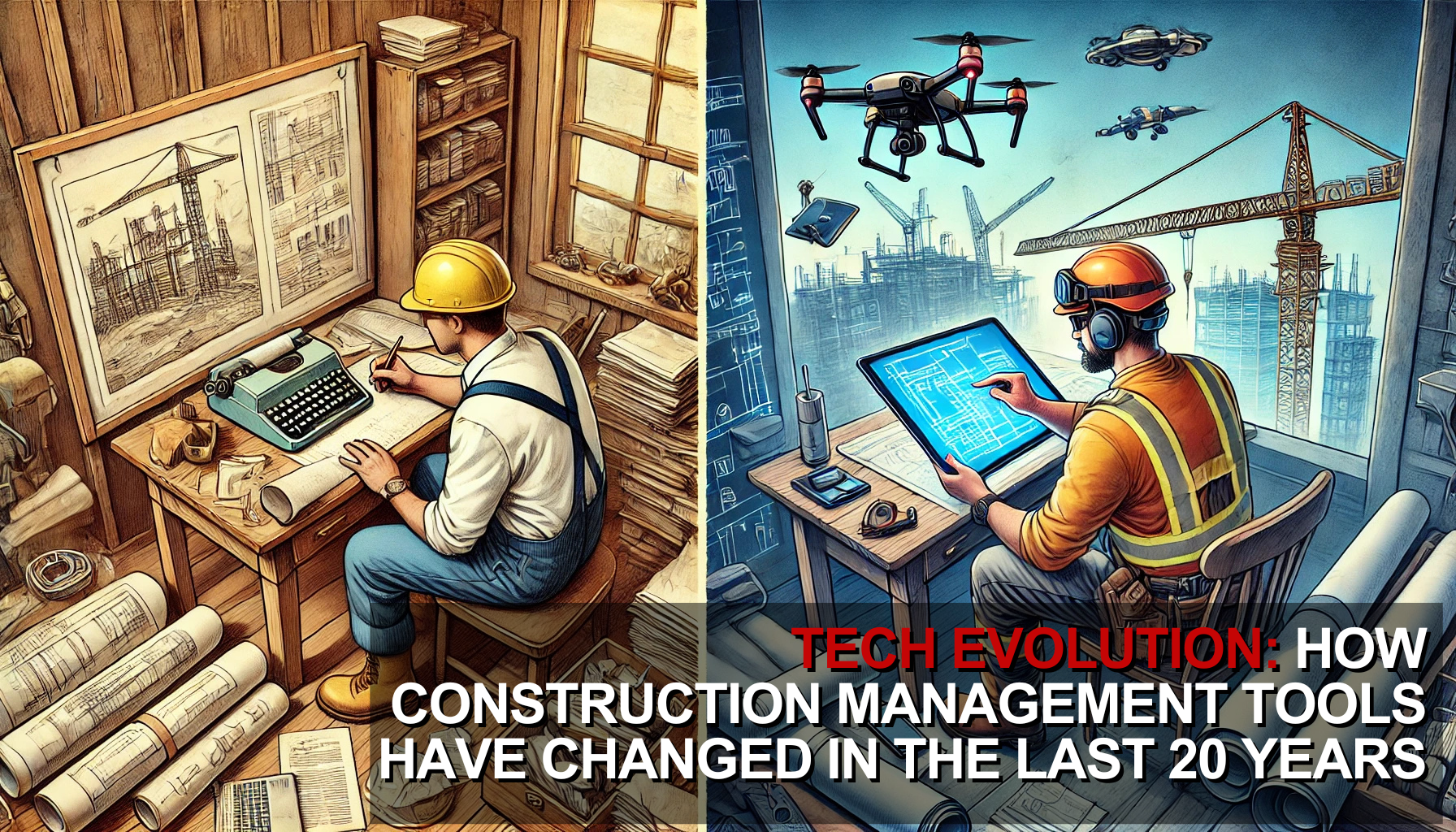As 2025 approaches, the construction industry stands on the cusp of a digital revolution, where new technologies promise to reshape how projects are planned, executed, and monitored. No longer bound by traditional methods, construction is now embracing innovative tools that make project management smarter, faster, and more sustainable. In this post we are going to explore the construction industry trends to watch for in 2025.
This shift isn’t just about technology for technology’s sake; it’s about meeting industry demands for efficiency, collaboration, and a more data-driven approach to construction management.
Below, we dive into the top trends that will drive the industry forward and look at how tools like ATSER’s cutting-edge project management software are transforming construction management.
Construction Industry Trends
- AI-Powered Project Management Solutions: Smarter Decisions, Fewer Surprises
Imagine a project management assistant that can predict delays, optimize resources, and mitigate risks before problems arise. AI is delivering this vision to the construction industry, automating insights that help keep projects on track.
What AI Brings to Construction:
- Predictive Analytics: Advanced algorithms help foresee delays, budget risks, and resource shortages by analyzing historical project data.
- Automated Controls: With AI, mundane tasks like document classification, quality checks, and schedule tracking become automated, reducing human error.
- Risk Management: AI monitors project risks in real-time, adjusting plans as conditions change, and offering proactive solutions.
- Mobile-First Project Management: Power in Your Pocket
As construction sites become increasingly decentralized, mobile-first project management tools are bridging the gap between office and field. Mobile solutions now allow teams to access project data, submit real-time updates, and stay connected regardless of location, bringing immense flexibility and convenience to the job site.

Features Driving Mobile-First Adoption:
- Field Operations: Real-time tracking and digital reporting keep teams synchronized and efficient.
- Document Management: Cloud storage and offline access ensure all project documents are available when and where needed.
- Safety and Compliance: Mobile checklists, safety alerts, and incident tracking keep job sites safe and compliant with ease.
Check ATSER’s Field Management app!
- Augmented Reality (AR): Bringing Blueprints to Life on the Site
Augmented reality is transforming construction management by overlaying digital designs onto physical spaces, helping teams visualize complex plans directly on the job site. AR technology is turning blueprints into interactive 3D models, making it easier for teams to detect clashes, plan installations, and conduct virtual walkthroughs.
Key Benefits of AR in Construction:
- Design Visualization: See BIM models in real-world contexts, making spatial planning intuitive and precise.
- Remote Collaboration: AR allows off-site experts to virtually join inspections, reducing the need for travel while ensuring project accuracy.
- Safety and Training: AR simulations provide immersive training experiences, ensuring that workers are prepared for real-world challenges.
Learn more about ATSER’s cloud-based Drawing Management Solution!
- Sustainability-Focused Project Management: Building a Greener Future
As the call for environmentally responsible building intensifies, construction project management tools are integrating features that track and reduce environmental impact. From carbon footprint tracking to waste management, these tools help organizations build sustainably and meet green certification standards.
How Sustainability Is Shaping Construction Software:
- Environmental Tracking: Track carbon emissions, energy usage, and water consumption to meet green building standards.
- Waste Management: Optimize recycling, reduce waste, and manage disposal costs effectively.
- Resource Efficiency: AI-driven suggestions help minimize material waste, optimize routes, and ensure efficient use of resources.
- Enhanced BIM Integration: Streamlined Design and Execution
Building Information Modeling (BIM) is evolving from a design tool to a vital component of project management. BIM now connects design with scheduling, cost management, and construction planning, creating a single source of truth for the entire project lifecycle.
The Power of BIM in Project Management:
- Collaboration: Real-time model updates keep every team member on the same page.
- 4D and 5D BIM: The integration of time and cost dimensions allows for better sequencing and budget control.
- Construction Planning: From logistics to safety, BIM data streamlines planning and mitigates risks.
Learn more about Plan-IT, ATSER’s Planning Management System that automates the planning phase of Engineering and Construction programs.
- Data Analytics and Reporting: Transforming Information into Insight
Today’s construction projects generate vast amounts of data, but it’s the analytics and reporting capabilities of modern software that turn this data into actionable insights. Dashboards now deliver real-time KPIs, predictive insights, and benchmarking, empowering stakeholders to make data-driven decisions.
Data Analytics Innovations:
- Performance Dashboards: Customizable views provide transparency and clarity for each stakeholder.
- Predictive Insights: Forecast risks, costs, and schedules with precision.
- Automated Reporting: Streamline compliance and executive reporting with automated tools that save time and reduce errors.

- Robust Supply Chain Management: Building Resilience in a Volatile Market
With supply chain disruptions still a challenge, construction software is stepping up to ensure materials and resources are managed efficiently. Automated tools help track inventory, manage supplier relationships, and optimize budgets in real time, giving projects a crucial edge in uncertain markets.
Supply Chain Solutions to Watch:
- Material Tracking: Real-time tracking ensures that materials are where they need to be, reducing delays.
- Vendor Management: Track supplier performance, automate contracts, and optimize procurement processes.
- Cost Control: Tools like price comparison and invoice reconciliation keep budgets under control.
- Cybersecurity: Protecting the Foundation of Digital Construction
As construction goes digital, security is paramount. Modern project management software is reinforcing cybersecurity through multi-layered encryption, real-time threat monitoring, and secure data sharing protocols. Safeguarding project data is now an industry standard and a crucial component of digital project management.
- Collaborative Project Delivery Tools: Aligning Teams for Success
With new project delivery methods like Integrated Project Delivery (IPD) and Design-Build, collaboration tools have become vital. Software now supports multi-party contracts, shared risks, and collaborative workflows that streamline decision-making and improve team synergy.
- Financial Management Integration: Bridging Project and Finance
Integrated financial management tools offer real-time budget tracking, automated billing, and financial reporting that keeps projects financially sound. By uniting project management with financial data, organizations gain greater control over costs, cash flow, and profitability.
The Path Forward: Embracing Change for a Competitive Edge
Digital transformation is more than a trend; it’s a necessity for construction firms that want to stay competitive. The future of construction lies in adopting new technologies that not only improve project efficiency but also pave the way for smarter, more sustainable building practices. Tools like ATSER’s Manage-IT exemplify the leap forward, using AI to empower project managers with insights, automation, and real-time support.
Practical Steps for Successful Implementation
To make the most of these technological advancements, construction companies should:
- Conduct comprehensive needs assessments to choose the right tools.
- Prioritize training to ensure seamless adoption and long-term user engagement.
- Integrate software with existing systems to streamline workflows.
- Develop clear data management and cybersecurity strategies.
- Plan for scalability, training, and support to future-proof their investments.
The journey toward a fully digital, AI-driven construction landscape is well underway. By adopting these tools and staying agile, construction firms will be well-positioned to meet the challenges of 2025 and beyond. The question is no longer if digital transformation will take place in construction but how fast companies will adapt. And for those who lead the charge, the benefits will be undeniable: greater efficiency, sustainability, and success across every project.
Ready to See the Difference?





